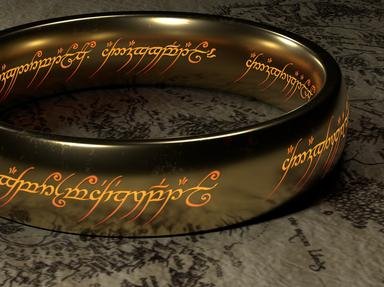Quiz Answer Key and Fun Facts
1. In chapter 2, which three realms are referred to by Harvey as no longer physically a part of Middle-earth?
2. Which realm's language is most closely related to Anglo-Saxon, according to the author?
3. When considering the many gods of Middle-earth, which god is absent?
4. What does the author say that the summoning of the Elves to Aman tells us about the Valar?
5. What does Harvey compare Atlantis to in Middle-earth?
6. True or False: The Seven Dwarf Fathers are said to be reborn throughout history. The author compares this to the Dalai Lama.
7. What are considered Tolkien's most original creatures in Middle-earth (the idea of them wasn't taken from some other myth or legend)?
8. Who is Tolkien's Lucifer?
9. What is the last major event of the Valarian Ages?
10. Who was the first elf to befriend a man?
11. What is another name for the Fifth Battle of Beleriand?
12. What major event occured during the first year of the Second Age?
13. Which of these events does NOT occur during the Third Age of Middle-earth?
14. Which runic alphabet is the Cirith system obviously based on, according to the author (well it's obvious to him, but not me!)?
15. When discussing Elven death, which example did the author NOT use?
16. Who does the author describe as "Tolkien's Classic Hero?"
17. True or False: In the section, "The Fate of the Ring-bearers," Galadriel, Elrond, Gil-galad, Cirdan, Gandalf, Bilbo, Frodo, and Sam, are mentioned.
18. Which story does the author call the closest thing to a Greek tragedy in Middle-earth?
19. In the chapter about Faith and Redemption, which character is NOT mentioned?
20. How does Harvey, the author, list the battles of the War of the Ring?
Source: Author
fingolfin7lotr
This quiz was reviewed by FunTrivia editor
agony before going online.
Any errors found in FunTrivia content are routinely corrected through our feedback system.
